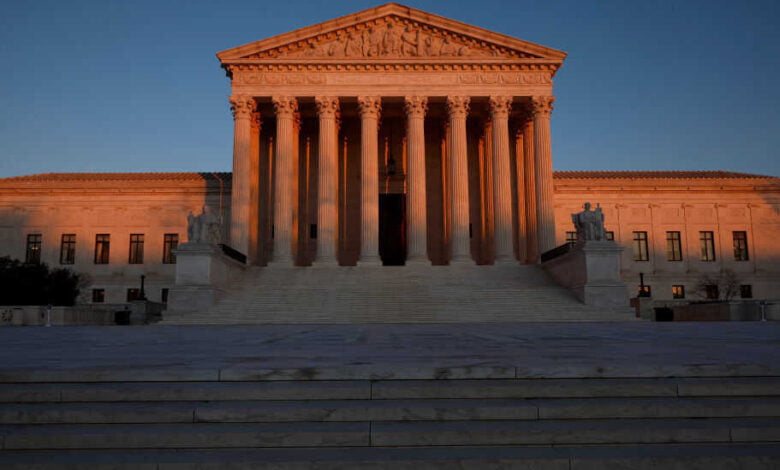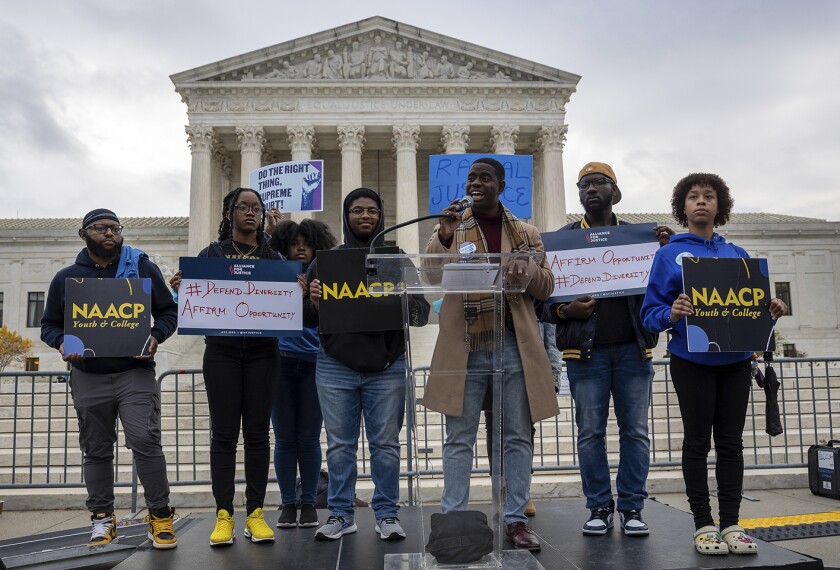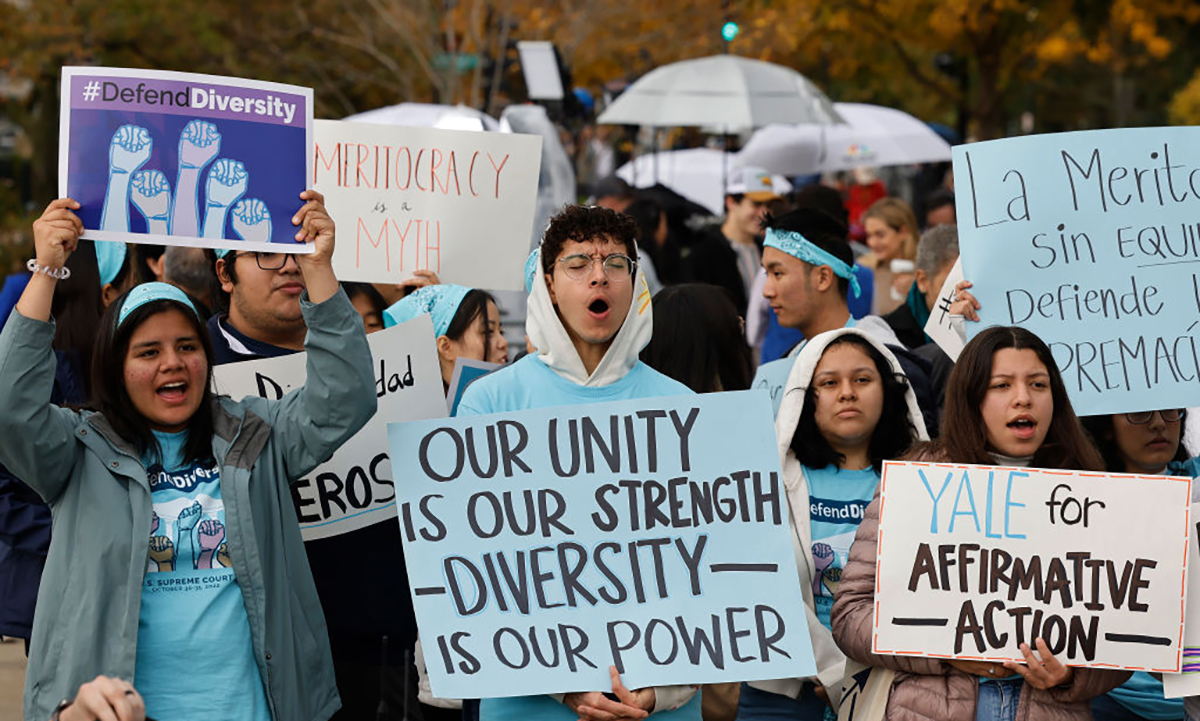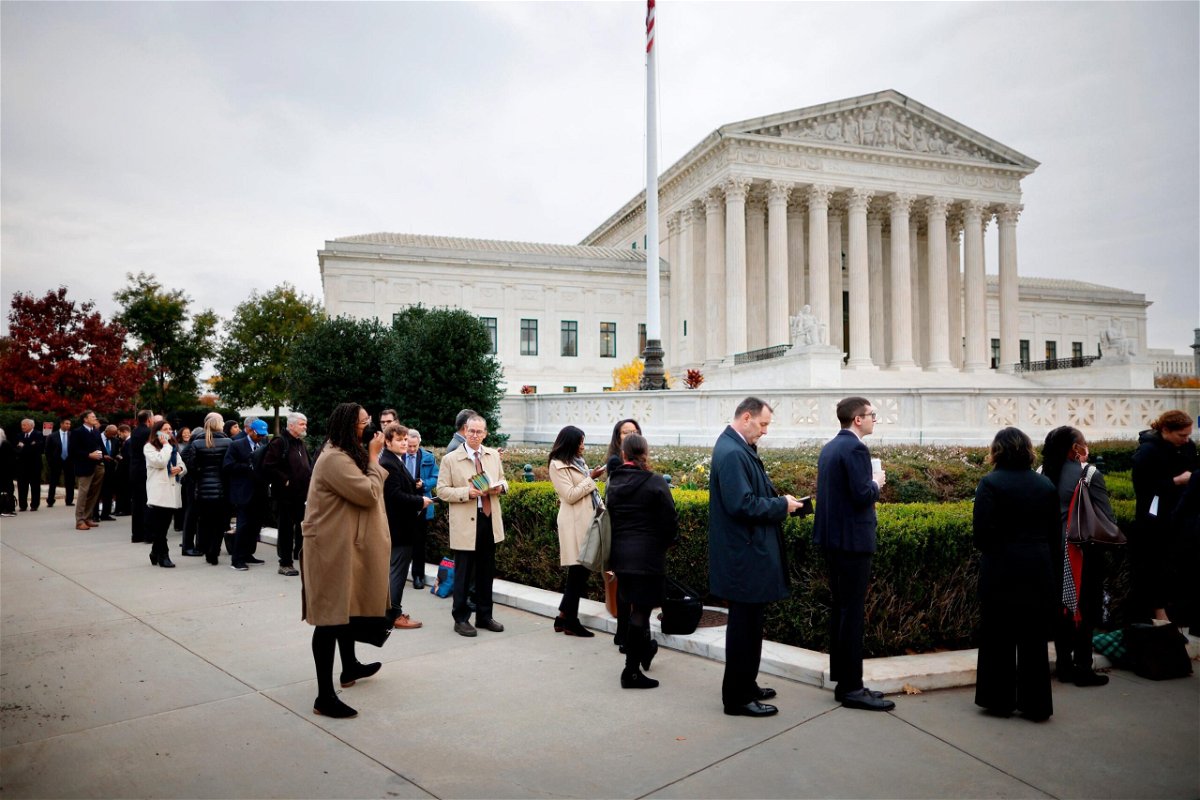What is the situation if the US Supreme Court decides to remove race as a factor in University admissions?

What is the situation if the US Supreme Court decides to remove race as a factor in university admissions? According to The Guardian, the survival of affirmative action in the higher education in the United States “appeared to be in serious jeopardy,” citing “hours of debate over more difficult questions of race.”
According to media reports, the United States Supreme Court (SCOTUS) appeared ready to declare the race-conscious the admissions policies at Harvard University and also the University of North Carolina illegal on Monday, October 31. (UNC).
The New York Times’ assessment was based on the tone and the content of “over five hours of the vigorous and occasionally testy arguments” in court. According to The Guardian, the survival of the affirmative action in higher education in the country United States “appeared to be in serious jeopardy,” citing “hours of debate over most difficult questions of race.”
According to Politico, a majority of the justices “sounded inclined to further more restrict the use of the race in college admissions during the arguments in two high-profile cases at the Supreme Court” in early May of this year, about six weeks before the order.
Abolition of affirmative action would violate decades of precedent, jeopardize similar policies in colleges and universities across the mainland of United States, and would almost certainly result in rhe gradual decrease in the representation of Black and Latino students and an increase in the representation of White and Asian students.
How did the Supreme Court become involved in this case?
On January 24, the court agreed to investigate whether race should be a factor in student admissions at Harvard and UNC after hearing a petition from the Virginia-based group Students for Fair Admissions (SFA). This decision paved the way for a reconsideration of the practice of “race-conscious” admissions on American college campuses.
Previously, lower courts had upheld the rules of both universities in separate orders. (Unlike the Indian Supreme Court, the SCOTUS hears primarily appeals from lower courts; its original jurisdiction, or when it is the first court to hear morever a particular case, is limited to hearing disputes between states or between ambassadors and other high officials.)
In 2018, a Boston district court ruled in favor of Harvard, and an appeals court upheld the decision in 2020. In February 2021, the SFA petitioned the Supreme Court.
The university won in a lower court in 2021 in the UNC case, and the SFA then requested that the SCOTUS hear both cases concurrently.
In the Harvard case, the SFA had received lower court support from the Donald Trump Administration. However, Joe Biden’s administration backed the university.
The court initially consolidated the two cases, but after Justice Ketanji Brown Jackson took her seat on the bench in June, she recused herself from the Harvard case because she had previously served on one of the university’s governing bodies.
And who exactly are the SFA?
According to its website, the organization is a “nonprofit membership group of moreover over 20,000 students, parents, and all others who believe that racial classifications and also the preferences in the main college admissions are unfair, unnecessary, and illegal.”
The SFA’s “mission is to support and also participate in litigation that will restore all the original principles of our country’s civil rights movement: a student’s race and also ethnicity should not be factors that either harm or that help the student gain admission to a competitive university,” according to the organization’s website.
The organization’s president is Edward Blum, a 70-year-old conservative legal strategist. In a 2017 profile, the New York Times described Blum as a “one-man legal factory with a more growing record of finding plaintiffs who match his causes, then winning big victories, and trying above all to erase racial preferences from American life.”
Blum “organized more than two dozen lawsuits challenging affirmative action policies and voting rights laws across the country,” which is according to the New York Times article.

Blum was the plaintiff in the lawsuit alleging that Harvard’s affirmative action policies constituted an unconstitutional quota system. He was also a driving force behind the Supreme Court’s legal challenges to the Voting Rights Act of 1965, a critical piece of civil rights legislation, as well as the University of Texas’ use of race in admissions decisions. According to a New York Times report, he won the second case but lost the first.
Do all colleges and universities in the United States consider race when making admissions decisions?
No, not all of them. In nine states, affirmative action based on race is illegal: Oklahoma, Idaho, Washington, Michigan, Nebraska, Arizona, New Hampshire, Florida, and California.
There are no official estimates of the number of colleges and universities that consider race when considering applicants. However, according to unofficial estimates compiled by nonprofits such as the College Board, only a small percentage of America’s roughly 6,000 colleges do so. Nonetheless, the list includes a few well-known people, making it more notable than it would be based solely on the numbers.
What has the US Supreme Court previously said about affirmative action policies?
This issue had previously been contested on several occasions, and the court has made numerous decisions concerning racial admissions issues since the 1970s.
In the 1978 case “Regents of the main University of California vs. Alan Bakke,” the US Supreme Court ruled that the university could not reserve seats for Black students, despite the fact that race could also be considered as one of the admissions criteria.
Grutter v. Bollinger, a 2003 special case in which the University of Michigan Law School was involved, and Fisher v. University of Texas are two recent significant cases of this type (2016).
THE 2003 DECISION: Barbara Grutter, a white Michigan resident, filed a lawsuit alleging that the University of Michigan’s admissions policy, which takes race into account, prevented her from enrolling.
Grutter claimed that the university infringed on her 14th Amendment right, which states that no one may be mostly deprived of life, liberty, or also property without due process of law or be denied equal protection under the law. The university responded by claiming that it was promoting racial diversity.
The court also ruled 5-4 in favor of the university, stating that the “Equal Protection Clause does not preclude the Law School from using race in admissions decisions in a narrowly tailored manner to further a compelling interest in obtaining all the educational benefits that flow from a diverse student body.”
However, the majority opinion added, “We expect that the use of the racial preferences will no longer be necessary in 25 years to further the interest approved today,” leaving room for future review.
THE 2016 DECISION: In 2008, Abigail Fisher, a White woman who was too denied admission to the University of the Texas at Austin, filed a lawsuit alleging that her 14th Amendment rights had also been violated. The university claims that its policy is completely legal.
In the United States, an appeals court then upheld the lower court’s decision in favor of UT-Austin. However, in 2013, the Supreme Court overturned the lower court’s decision and ordered that the case be re-examined.
After the lower court ruled once more in favor of the university, the Supreme Court reheard the case on the basis of a new argument from Fisher and ultimately ruled 4-3 to uphold the university’s policy.
Although a college must “constantly reassess” the need for race-conscious review, Justice Anthony Kennedy noted in the majority opinion that UT-Austin appeared to have done so with care. Chief Justice John Roberts joined the dissenting opinion in rejecting the claim that the policy promotes diversity, stating that UT-Austin had “failed to define that interest with any clarity or to demonstrate that its program is narrowly tailored to achieve that or any other particular interest.”
What is the end result, both for the United States and for other countries?
Although the Supreme Court has tended to favor affirmative action, its decisions have been supported by slim bench majorities. Furthermore, certain justices have made pointed remarks indicating that they have reservations and only conditionally support the policy.
Given the circumstances, the court’s overall stance on affirmative action in university admissions has been expected to shift ever since President Donald Trump’s appointees gave the bench a distinctly conservative majority. The repeal of the long-standing constitutional right to abortion in June was interpreted as a sign of more daring decisions on contentious issues.
Over the years, the main defense in almost all of these cases has been that the law discriminates against non-Black people; this is a defense used by people and organizations opposed to caste-based reservations in India. In reality, the ruling may have an impact on Indian students seeking admission to colleges and universities in the United States.
The outcomes of the two cases, “Students for Fair Admissions v. Harvard” and “Students for Fair Admissions v. University of North Carolina,” are expected to be announced in June, according to The New York Times.

The court’s conservative majority questioned the legal justification for allowing the practice and inquired about the extent to which colleges and universities could implement new “race neutral” admissions policies aimed at increasing racial diversity. However, some justices made it clear that they would be willing to allow applicants to mention their racial identities in essays about their experiences, such as how they overcame discrimination.
The minority of liberal justices defended the use of race in admissions, emphasizing the importance of diversity on campuses and the difficulties in achieving it without considering race.
Affirmative action has been a contentious issue since it was implemented to address historical discrimination. While corporate America and educational institutions strongly support it as necessary for fostering diversity, conservatives have criticized it as incompatible with the idea that racial equality entails treating all races equally.
Students for Fair Admissions, also led by conservative activist Ed Blum, filed the cases against UNC and Harvard. The Supreme Court, which has a moreover 6-3 conservative majority, heard oral arguments in the UNC and Harvard cases back-to-back. A decision is merely expected by the end of June.
During the nearly five hours of oral arguments, conservative justices expressed their opposition to an application’s explicit consideration of race.
What can you learn from simply checking a box? Justice UNC’s Ryan Park was questioned by Samuel Alito.
However, some conservatives appeared to be more open to including some recognition of a candidate’s race in the selection process.
Would it be acceptable if Harvard was “allowed to consider what an applicant would say in an essay about growing up having to confront discrimination and how he or she did that” if box-checking was prohibited? Cameron Norris, the attorney who was contesting Harvard’s policy, was questioned by Chief Justice John Roberts.
According to Norris, the university may legitimately take these expressions of racial identity into account.
Amy Coney Barrett, a conservative justice and former Notre Dame Law School professor, was among those who appeared sympathetic to taking into account a student’s “experiential statement” on race rather than the “box-checking” mentioned by Alito.

The questions posed by Roberts and Barrett, as well as similar remarks made by another conservative justice, Brett Kavanaugh, suggested that they were thinking about what kind of racial-neutral policies to promote diversity might be considered if the court stopped explicitly considering race.
The Supreme Court’s decision in 2003 that affirmative action would be unnecessary after 25 years was at odds with conservative justices’ apparent skepticism that colleges and universities would ever decide that their diversity goals could be met without considering race.
Barrett questioned whether the 2003 decision’s suggestion that the race might no longer need to be considered after the aspirational deadline of 25 years was “grossly optimistic.”
What if there isn’t a conclusion? She paused.
While fellow conservative Justice Neil Gorsuch also expressed concern that the goal of achieving diversity was analogous to having more racial quotas, which the court has prohibited, conservative Justice Clarence Thomas questioned whether colleges and universities had a compelling interest in doing so.
Gorsuch also stated that Harvard uses the children of wealthy donors, talented athletes, and people whose parents attended the university as examples of a diverse class. He was surprised that Harvard thought having a competitive squash team was necessary for achieving its diversity goals.
“I’m not making it up,” Gorsuch insisted.
The first oral argument on UNC’s affirmative action policy began with liberal Justice Sonia Sotomayor questioning opposing counsel Patrick Strawbridge on how college admissions officers can evaluate applicants from various socioeconomic backgrounds without considering race. This was done while affirmative action supporters demonstrated outside the courthouse.
Sotomayor claims that “race sometimes does correlate to some experiences but not others.” “If you are Black, you are more likely to attend a school with insufficient resources.” Teachers with less experience than others are more likely to teach you. You are more likely to be perceived as having less academic potential.
Ketanji Brown, a liberal justice Jackson disagreed with Strawbridge’s assessment of UNC’s procedure, claiming that race is never considered separately.
“You haven’t shown or demonstrated a single instance in which people consider only their race and extrapolate stereotypes and other ideas from that.” She claimed that they are looking at the whole person.
She went on to say that the school does not just consider race when someone checks a box.
Jackson also questioned whether eliminating racial consideration would result in new legal problems. She wondered if it would be discriminatory if white students from North Carolina were still allowed to discuss their family backgrounds on their applications while Black students descended from slaves were not. A Black applicant “wouldn’t be able to,” she explained, “because his story is in many ways bound up with his race,” whereas a white applicant “would be able to have his family background considered and valued.”

According to liberal justice Elena Kagan, who was dean of Harvard Law School prior to the lawsuit’s filing and vehemently defended the importance of racial diversity on campus, colleges are “pipelines to leadership in our society.”
The attorneys for the group have asked the Supreme Court to overturn the 2003 decision in Grutter v. Bollinger, which stated that because universities had a compelling interest in maintaining diverse campuses, race could be considered when making admissions decisions. The legal controversy was left unresolved by a splintered 1978 Supreme Court decision that prohibited racial quotas but left the door open to some consideration of race.
The admissions policy of the University of Texas at Austin was narrowly upheld by the Supreme Court on a 4-3 vote in 2016, the most recent time the court addressed affirmative action, with conservative Justice Anthony Kennedy, who has since retired, casting the deciding vote.
The court shifted to the right after former President Donald Trump appointed three conservative justices. Jackson’s appointment by President Joe Biden did not alter the court’s ideological makeup because she replaced fellow liberal Justice Stephen Breyer. Jackson has withdrawn from that case and will only participate in the North Carolina dispute because she served on Harvard’s board of overseers during the litigation.
According to Blum’s group, the 14th Amendment’s equal protection clause and federal law prohibiting discrimination in education both make any consideration of race in college admissions illegal. They claim that the Harvard admissions policy discriminates against Asian applicants and that the UNC admissions policy discriminates against both white and Asian applicants. In both cases, lower courts ruled in favor of the universities.
Universities, as well as those who support them, such as the Biden administration, civil rights organizations, corporations, and former military leaders, argue that their policies are justified because seeking diversity on campus is not the same as excluding someone solely on the basis of race. According to the universities, a thorough, individualized analysis of each applicant includes a number of factors, with race being just one of them.
Affirmative action supporters argue that if the practice is discontinued, race-neutral policies to promote diversity will frequently fail, resulting in a decrease in Black and Hispanic student enrollment. Opponents argue that taking race into account is unnecessary, citing nine states that already prohibit the practice.




